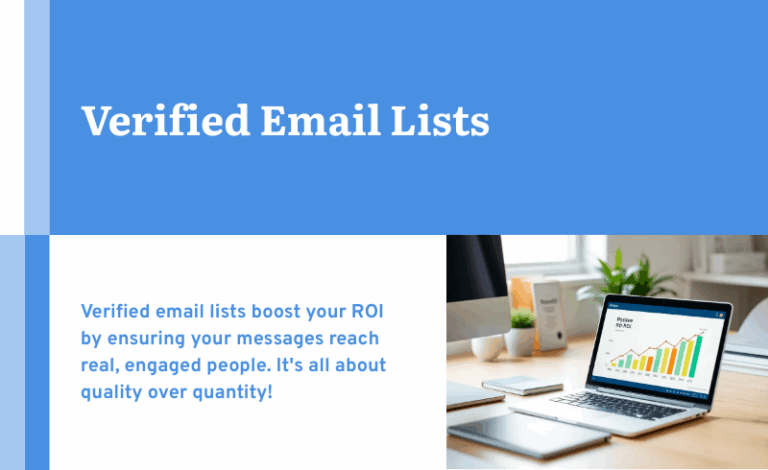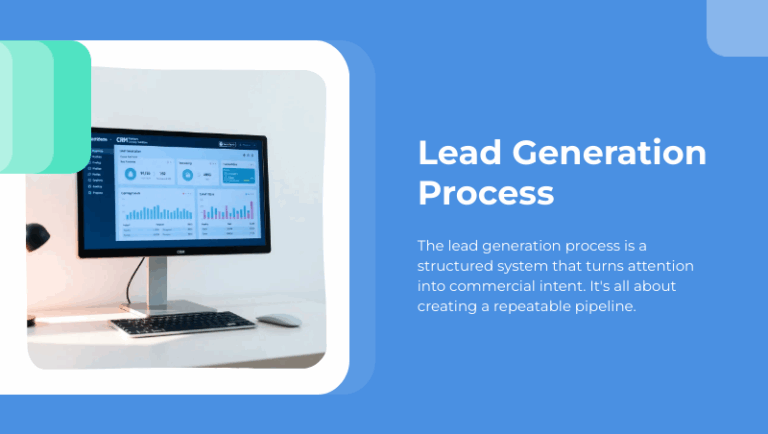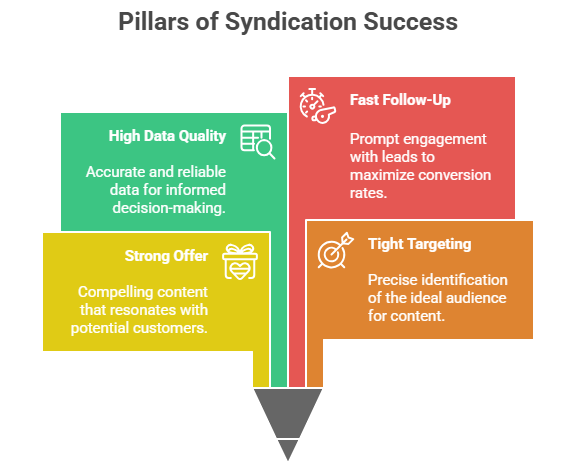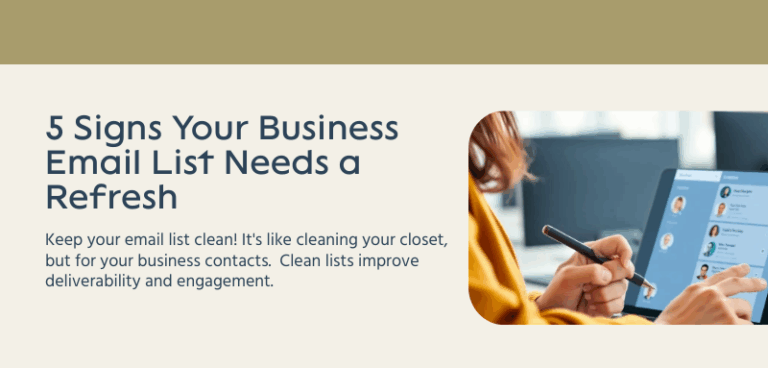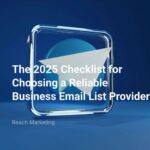
With a growing emphasis on privacy and personalization, the 2025 digital marketing landscape is far less forgiving of careless or outdated outreach strategies. The purchase of B2B email lists is still a viable option for lead generation, but the margin for error is shrinking. Inaccurate data, non-compliant sourcing methods, or poor targeting can lead to blacklisting, legal penalties, and brand damage.
As such, businesses must approach email list acquisition with the same rigor as they would any strategic investment. The goal is not merely to acquire leads, but to acquire qualified, compliant, and engaged contacts that convert. Below is a detailed checklist designed to help you evaluate email list providers against the most crucial benchmarks in 2025.
Data Accuracy and Validation Methods
A reliable provider should treat data accuracy as a core deliverable—not an afterthought.
What to Look For:
- Real-time email validation to check the accuracy of each contact before delivery.
- Bounce rate guarantees, typically below 5%.
- Phone and postal verification, where applicable, for multichannel campaigns.
- Refresh cycles, ideally every 30 to 90 days, to ensure removal of inactive contacts.
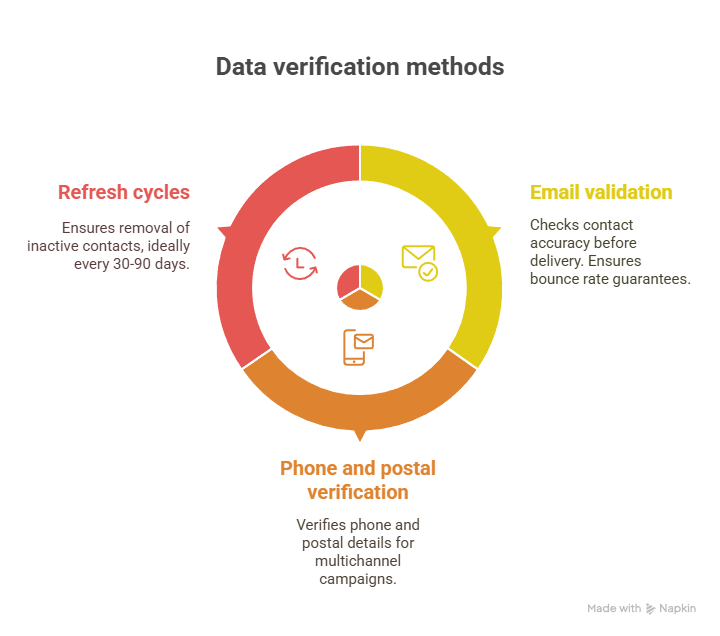
Why It Matters:
A 1% increase in bounce rate can lower sender reputation, impacting your entire domain. Outdated records, such as departed employees or changed job titles, decrease engagement and inflate campaign costs.
Compliance with Privacy and Anti-Spam Regulations
With evolving regulations such as GDPR, CCPA, and newer regional laws, data compliance is now a minimum standard, not a luxury.
Key Requirements:
- Explicit consent records for each contact.
- Double opt-in data, especially for European and Canadian markets.
- Clear unsubscribe pathways in all communications.
- Data lineage documentation, showing when, where, and how each contact was obtained.
Consequences of Non-Compliance:
- Fines ranging from thousands to millions depending on the jurisdiction.
- Reputational harm that erodes customer trust.
- Reduced deliverability due to spam flagging.
Deliverability and Sender Reputation
The best list in the world is useless if your emails never reach the inbox. Deliverability hinges on a provider’s internal practices.
Indicators of Strong Deliverability:
- Use of permission-based lists only.
- Low spam complaint and unsubscribe rates.
- Inclusion of seed testing data to predict spam folder placement.
- Access to dedicated IPs and domain reputation tools.
What You Can Measure:
- Inbox placement rates (should exceed 85%).
- Open rates benchmarked by industry.
- Engagement depth, such as reply rates or time spent reading emails.
Segmentation and Targeting Capabilities
Segmentation is not just for personalization; it improves ROI by ensuring you only reach relevant prospects.
Useful Segmentation Filters:
- Firmographics: Industry, company size, revenue, number of employees.
- Technographics: Software stack used, cloud adoption, CRM platform.
- Geographics: Country, state, or even postal code targeting.
- Job Titles: From C-suite to functional specialists.
Advanced Capabilities:
- Intent data: Based on content consumption, signaling purchase interest.
- Predictive modeling: Providers who offer scoring models based on engagement potential.
- Historical campaign performance: Feedback loop integration with your CRM.
Reputation and Track Record
Reputable providers will have a long history of success and transparency.
What to Investigate:
- Customer references and case studies.
- Years in operation, particularly in regulated industries.
- Independent reviews from business directories or forums.
- Success rates from sample campaigns.
Red Flags:
- Vague answers about data origin.
- No satisfaction guarantee or refund policy.
- Too-good-to-be-true metrics without substantiation.
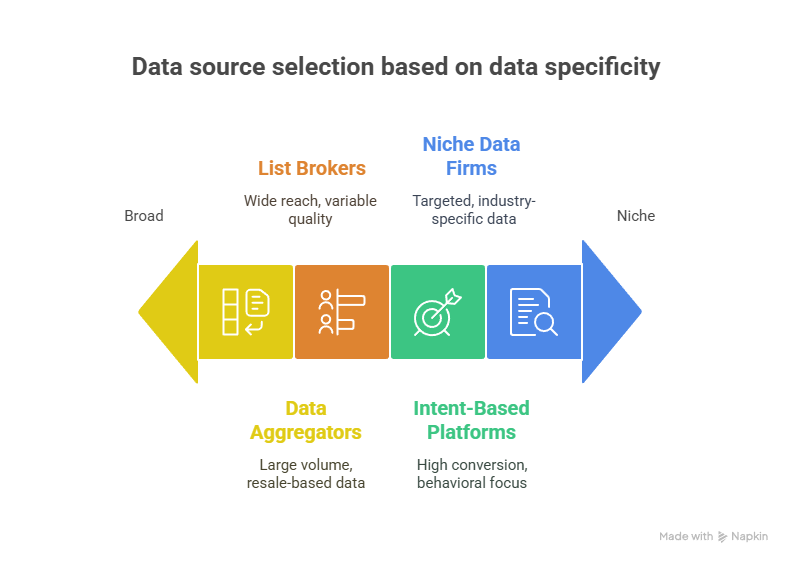
Customization and Scalability
Not all businesses need the same volume or type of data. A reliable provider accommodates both.
Features to Seek:
- Self-serve portals for filtering data based on your needs.
- Custom enrichment services, such as appending LinkedIn URLs or social data.
- API access for real-time CRM syncing.
- Flexible license agreements (one-time, subscription, or campaign-based).
Benefit:
You avoid overspending on irrelevant contacts and maintain agility as your outreach strategy evolves.
Cost vs. Value
A low-priced list may seem attractive, but poor data quality could result in a much higher hidden cost. A more strategic approach evaluates cost per qualified lead, not just cost per record.
Common Pricing Models:
- Cost per thousand records (CPM): Standard for bulk purchases.
- Pay-per-lead: For verified appointments or intent-qualified leads.
- Flat-rate subscription: Ideal for ongoing, high-volume outreach.
Assess Value Through:
- Trial runs or sample data sets.
- Lead-to-conversion rates on previous campaigns.
- Engagement metrics such as open and click-through rates.
Support and Service Levels
Top-tier providers offer more than just data—they offer partnership and insight.
Look for:
- Dedicated account managers who understand your vertical.
- SLA-backed response times for queries or issues.
- Training resources including webinars, how-to guides, and onboarding sessions.
- Data consulting to help optimize segmentation and targeting strategy.
Red Flags to Watch For
Even reputable-looking providers can cut corners. Stay alert to these warning signs:
- Purchased lists from third parties: Indicates a lack of control over data hygiene.
- No contract or vague terms: Increases the risk of legal or compliance issues.
- Obsolete contact databases: Check for last updated timestamps.
- No opt-out or consent documentation: Non-compliance hazard.
Types of Providers and Comparative Overview
| Provider Type | Pros | Cons |
| List Brokers | Wide reach, fast delivery | Variable quality, lack of transparency |
| Data Aggregators | Large volumes, segmentation options | Often resale-based, lower compliance standards |
| Niche Data Firms | Highly targeted, industry-specific | More expensive, limited volume |
| Intent-Based Platforms | High conversion potential, behavioral segmentation | Requires more sophisticated integration and budget |
Future Outlook for Email List Providers in 2025 and Beyond
The email list market is evolving rapidly. Key trends shaping the future include:
- AI-Powered List Curation: Providers will increasingly use machine learning to score contacts based on fit and likelihood to engage.
- Privacy-First Infrastructure: As laws continue to tighten, zero-party and first-party data will take center stage.
- Real-Time Personalization: Live data feeds and intent-based signals will become table stakes.
- B2B Identity Graphs: Enhanced profiles built from verified multi-channel data points will replace generic lists.
Expect providers to differentiate based on data intelligence, not just list volume.
Final Email List Provider Checklist Summary
Here is a quick-reference checklist you can use when vetting providers:
– Can the provider verify data accuracy and freshness?
– Is all data compliant with global privacy laws (GDPR, CCPA, etc.)?
– Are deliverability rates guaranteed and measured?
– Can lists be segmented by firmographic, geographic, and behavioral traits?
– Do they have a track record of successful campaigns and satisfied clients?
– Are service levels and support robust and documented?
– Is the pricing model clear and aligned with ROI goals?
– Are there any red flags or transparency issues?
Make Your Investment Count
Choosing a business email list provider in 2025 is not a transactional decision—it’s a strategic one. The right provider becomes a partner in your demand generation efforts, helping you achieve consistent, scalable, and ethical growth.
By adhering to this detailed checklist, you significantly reduce the risk of campaign underperformance, spam flagging, or non-compliance penalties. Instead, you position your organization to take full advantage of one of the highest-ROI channels available to marketers today.
Don’t just buy a list. Invest in a pipeline of opportunities.
